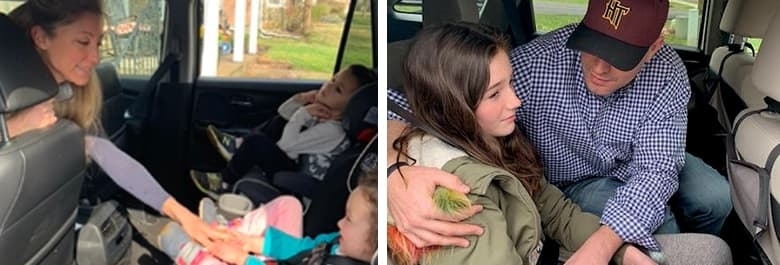How to prepare your child for COVID testing
Even if we have mild symptoms, we are urged to be tested for COVID. Or we may have no symptoms but have close or accidental contact with known cases. This includes children.
So, what can you do to make your child's COVID testing as simple and stress-free as possible?
With some preparation, role-playing, and simulating the type of behavior you want to see, the process can be smooth sailing.
Start the conversation now
Ideally, you want to start the conversation about COVID testing before your child really needs a swab. Let's reflect on the epidemic so far and imagine what might happen in the future.

Preparation is the key
Knowing what is going to happen is important for children to feel controlled and empowered in situations such as COVID testing.
Encourage them to watch videos showing children undergoing COVID testing, such as this one.
Encourage questions and be willing to answer questions honestly. Admit that something stuck in your nose feels uncomfortable. But this discomfort is only temporary.
This Canadian video shows a cotton swab directly entering a child's nose. The video says that it feels a bit like what happens when you get water into your nose, or that your nose feels tingling after drinking soda.
If children are told that the surgery will not cause harm, they will report that they feel cheated. This may cause them to distrust future medical procedures.
Depending on the age of your child, you can also help prepare some role plays, called therapeutic games. This type of preparation helps children feel more comfortable and less anxious before the medical procedure.
For COVID testing, this may include having your child try to wear a mask. Then, your child can make a long swab with a few cotton swabs taped together to "test" their teddy bear or doll.
Before you go
To help your child control what happens to them, consider how they participate in the process. Give them choices as much as possible.
Which test center do they want to go to? What toys do they wish to bring with them during the exam? The test may take a long time. What fun things can they take with them or do to pass the time? What snack do they want?
During the test
Children are good at getting tips from their parents, so stay calm and confident when taking your children to take the test. If you are also being tested, they may want to see you go first.

Ask the testers to talk about what they are doing. Avoid distractions and bribery. Offering bribes will leave the child with the impression that they need to be worried, and distraction will make the child wonder why they are distracted.
As with vaccinations, some children may like to watch to understand what is happening instead of closing their eyes. Give your child a choice.
Be completely with your child during the operation and put your phone aside.
Humor helps make things easy and enjoyable and reduces stress levels. What do COVID-19 jokes have in common? They are very attractive!
After the test
Before you receive the results, you need to go home, so please brainstorm with your child and do something interesting while waiting.
Explain that their results will return positive or negative. Positive means you have COVID-19, negative means you don't.
Consider how best to help your child cope with positive results. Some children may be a little anxious about this, even if their symptoms are very mild.
In short
Overall, this respectful approach to child-centered healthcare focuses on building partnerships with children rather than using authority or incentives.
We have successfully used this method in children's research projects involving invasive evaluation. It can help children feel in control, help reduce anxiety about medical procedures, and help them feel their own strength from their own experiences.
Think of COVID testing as an opportunity for your child to learn more about how health care works. A strong COVID testing experience can help your child prepare for future interactions with the health system.
